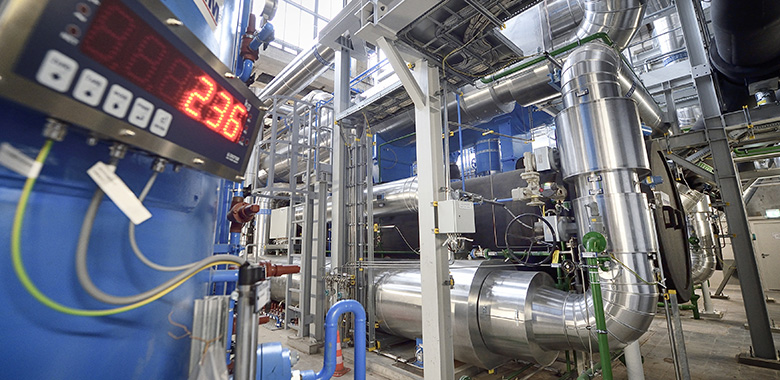Heat pumps play a key role in Switzerland's future heat supply by facilitating the efficient use of more environmental and renewable energy sources.
Up to now, they have been mainly used (> 97%) to supply single-family houses or single apartment buildings, operating more or less at constant temperature and power ranges. The integration of heat pumps in district heating systems was technically difficult due to the high temperatures required by the networks, usually around 80 or 90 °C. Furthermore, heat pump manufacturers are only producing larger heat pumps on special request, which makes their final product very expensive. Nowadays, due to the increasing potential of district heating systems at low temperature (in Switzerland < 60 °C), heat pumps can be integrated into them with larger power ranges and for different temperature levels without significantly losing their efficiency.
Within the IEA’s Heat Pumping Technologies Annex 47 , a variety of other application possibilities were found and described on how heat pumps can be integrated in district heating systems. For example, heat pumps can use the return temperatures of existing district heating systems as a heat source in order to increase the capacity of an existing district heating network. Another benefit is the reduction of heat losses in the return pipe, since existing networks usually suffer from high return temperatures. In addition, the increase in efficiency of the existing burner is improved thanks to better condensation.
Heat pumps can provide a huge impact and a very quick decarbonization of existing heating systems in districts and cites, as it is for example the case in Vienna or Helsinki (see Helsinki article below - link to article). Provided that the electricity used by the heat pumps comes from renewable energy sources, they should be considered by authorities and countries, which signed the Climate Agreements in Paris, as a key contribution to reach their climate targets. Image: Large heat pump Simmering January 2019, copyright Wien Energie/Zinner


